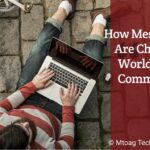BEIJING — In a move that has reignited tensions between Washington and Beijing, U.S. presidential hopeful Donald J. Trump’s latest proposal to implement steep port fees on foreign vessels entering American harbors has drawn sharp rebuke from Chinese shipbuilders and maritime economists, who are warning of cascading effects across the global shipping and trade ecosystem – China shipbuilders.
Describing the proposed tariffs as “short-sighted” and “economically self-destructive,” representatives from China’s largest shipbuilding conglomerates, including China State Shipbuilding Corporation (CSSC) and China Shipbuilding Industry Corporation (CSIC), voiced deep concern over the potential disruption such fees would impose on global supply chains already rattled by inflation, post-pandemic logistics realignments, and escalating geopolitical tensions.
“This is not just a policy shift—it’s a shockwave,” said Zhang Wei, policy director at CSSC. “The imposition of arbitrary port fees on foreign vessels is a regression to protectionist ideology that threatens the balance of maritime commerce.”
Trump, who is currently leading in Republican primary polls and mounting a combative campaign focused on economic nationalism, announced the proposed port fees during a rally in Ohio earlier this month. Framing the move as a response to what he terms “unfair trade advantages enjoyed by China,” Trump pledged to “bring back control of American ports” and deter what he alleges are “exploitative practices” by foreign maritime carriers.
But Chinese officials and industry leaders see the move as more political theater than pragmatic economic policy. “This is electioneering at the expense of global stability,” said Liu Fen, a senior analyst with the Chinese Academy of Social Sciences. “It will hurt American consumers, destabilize shipping alliances, and complicate the already fragile recovery of the global trade network.”
The Economic and Strategic Stakes
At the heart of the backlash lies a set of practical concerns about how such tariffs would reverberate across sectors. China, the world’s largest shipbuilder and a dominant force in global container shipping, supplies vessels to clients on every continent. With U.S. ports representing a significant node in global logistics, new fees could recalibrate longstanding shipping routes and business models.
According to internal estimates from CSSC, nearly 21% of Chinese-manufactured container vessels are routed to North American ports annually. A port fee—even one modest in size—could inflate costs across the logistics chain, leading to higher prices for goods ranging from electronics to machinery.
“It’s not just Chinese companies that will bear the brunt,” said Guo Han, director of operations at a Shanghai-based shipyard. “American retailers, logistics firms, and even agricultural exporters reliant on overseas components and vessels will feel the pinch.”
U.S. importers, particularly in states with port-heavy economies like California, Texas, and Louisiana, may also find themselves at odds with the policy. Industry coalitions, including the National Retail Federation (NRF), have already begun preliminary assessments of the policy’s implications and are expected to lobby against it should it gain traction in Congress – China shipbuilders.
Nationalism vs. Globalism
Trump’s port fee proposal falls into a broader pattern of economic nationalism that defined much of his first administration, marked by tariffs on Chinese steel, technology sanctions, and aggressive rhetoric about “decoupling” the two economies. However, maritime economists argue that this latest measure pushes that agenda into the logistical heart of global trade.
“We’re talking about a network that doesn’t just serve trade—it is trade,” said Chen Yuan, a professor of international logistics at Tsinghua University. “Ports are the connective tissue of globalization. Any policy that throttles their flow is a policy against modern economic interdependence.”
Moreover, the proposed fees could invite retaliatory action from Beijing. Already, whispers within China’s Ministry of Commerce suggest countermeasures are being explored, including heightened inspections on American vessels docking in Chinese ports or reciprocal fees. While no official statement has been issued, insiders say China is unlikely to allow such tariffs to go unanswered.
The Global Supply Chain at a Crossroads
The timing of Trump’s proposal is especially fraught. Global trade is still recalibrating from the twin shocks of the COVID-19 pandemic and Russia’s invasion of Ukraine, both of which have altered shipping routes, disrupted manufacturing hubs, and triggered inflationary pressures in freight costs.
The World Trade Organization recently forecasted a modest 2.6% growth in global trade for 2025, a recovery largely predicated on stable maritime operations and a cooperative international trade environment. New unilateral tariffs, especially from a major player like the U.S., could undermine that outlook.
Chinese shipbuilders, meanwhile, are making strategic investments in greener, more fuel-efficient vessels, aiming to meet upcoming international emissions regulations and maintain their competitive edge. Industry leaders fear that port fees could sap the financial runway needed to pursue innovation.
“Shipbuilding is not a sector that reacts well to policy whiplash,” noted Zhang Wei. “Our timelines stretch decades. We need stability, not shock therapy.”
U.S. Politics and Maritime Realities
Though Trump’s announcement garnered applause at the rally, policy experts are skeptical about the proposal’s feasibility without broader bipartisan support. The maritime industry in the U.S. includes not just global operators but also powerful labor unions and infrastructure investors who may view such tariffs as economically counterproductive.
“Port fees sound appealing in a stump speech,” said Helen Drake, a Washington-based trade policy consultant. “But in reality, they are regressive, inflationary, and hard to enforce. The administrative overhead alone would be a nightmare.”
Nevertheless, the political capital Trump has built around “America First” messaging ensures the proposal will not vanish quietly. Congressional Republicans have already begun discussing port security legislation that, while not explicitly calling for tariffs, could pave the way for increased fees.
China’s Counterplay and Strategic Patience
Beijing’s initial response has been measured, focusing on diplomatic channels and economic argumentation rather than confrontation. Chinese trade envoys have reportedly reached out to their U.S. counterparts, urging dialogue over discord – China shipbuilders.
Read on itsreleased.com: The Prospect of an Israeli Attack on Iran“Our position remains one of engagement,” said Lin Zhao, spokesperson for China’s Ministry of Commerce. “We believe that the challenges of global trade require multilateral solutions, not unilateral provocations.”
Still, industry observers note that China’s vast Belt and Road infrastructure initiative and growing trade alliances with Southeast Asia, Africa, and Latin America provide it with considerable leverage. Diversifying trade routes and port partnerships could, over time, reduce dependence on U.S. ports and blunt the impact of any tariffs.
“We are not without options,” said Guo Han. “The world is large, and trade will find a way.”
A Ship in Stormy Waters
As the U.S. gears up for an election year dominated by economic anxieties, immigration debates, and foreign policy flashpoints, Trump’s proposal throws yet another variable into the mix. For the maritime industry, the stakes could not be higher.
“Every port is a pressure point,” said Chen Yuan. “When you squeeze one, the pain is felt across the globe.”
Whether the port fees become reality or remain a campaign talking point, the episode underscores the fragility of global trade architecture and the profound influence of political rhetoric on material outcomes. In the churning waters of international commerce, even a single tariff can become a tide-turning wave – China shipbuilders.











